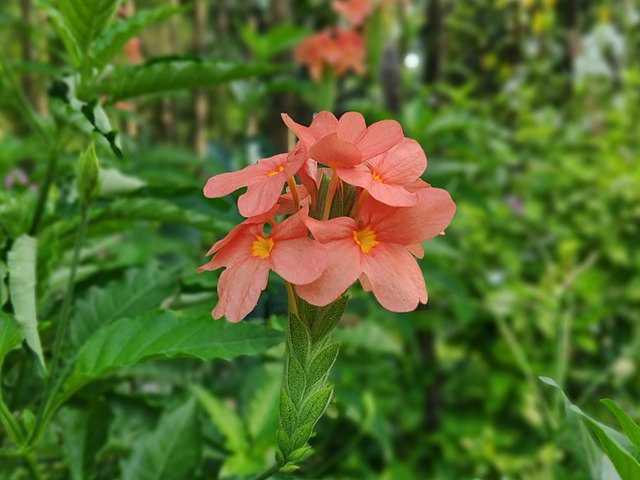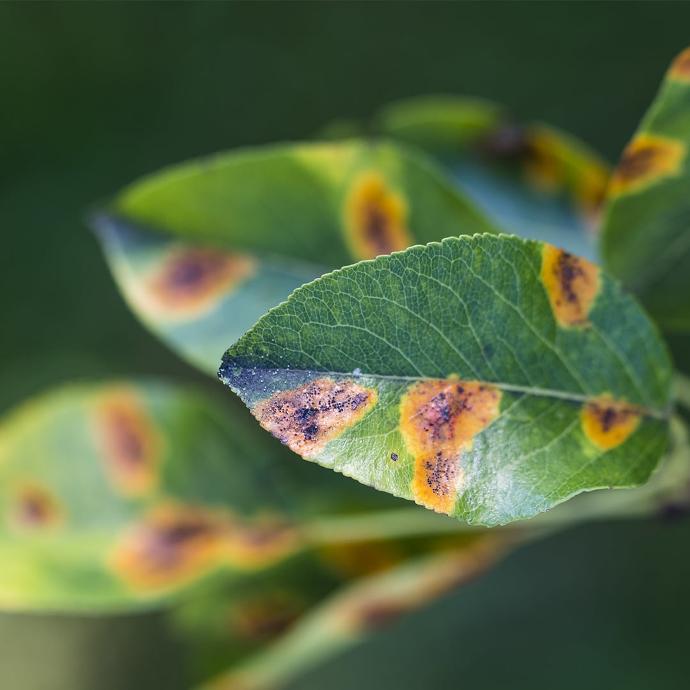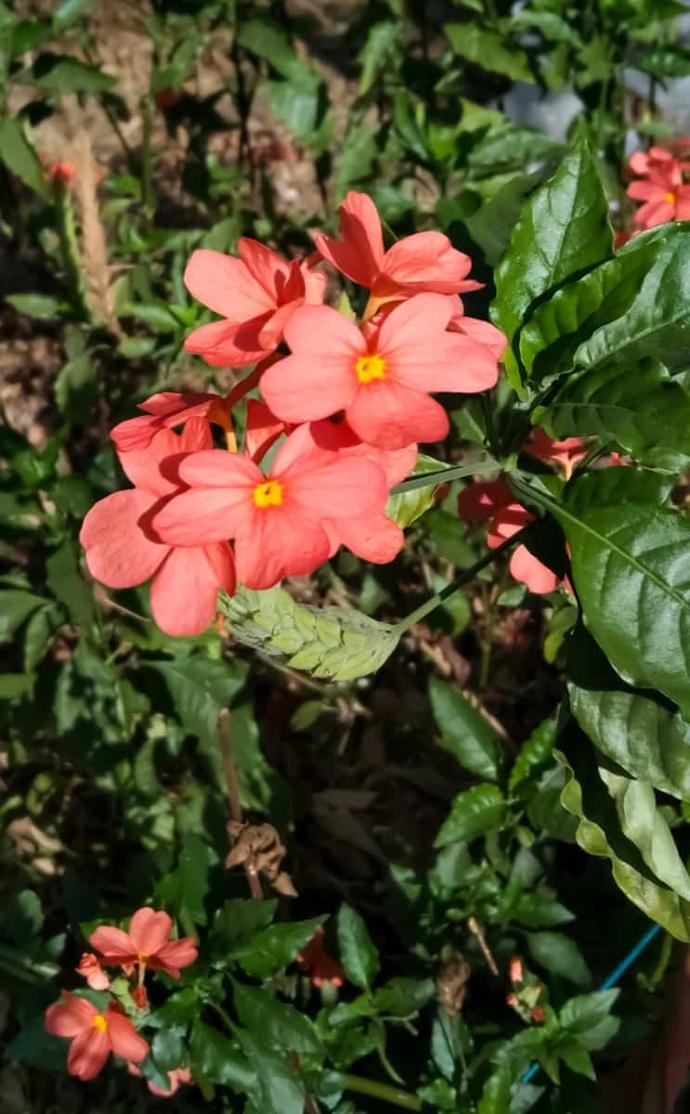Kanakambram Plant
Kanakambram, possibly referring to a specific plant variety, may have varying care requirements. Generally, provide well-draining soil, appropriate sunlight, and regular watering. Pruning and fertilizing practices may vary based on the specific characteristics of this plant.

Habit
Shrub
Height
0.6 to 1.2 m
Growth
Moderate
Soil
Well-drained, Loamy
Shade
Partial Shade to Full Sun
Moisture
Moist
Edible
No
Medicinal
No
Origin
India
Climatic Condition
Tropical, Subtropical
Temperature (°)
25°C to 35°C
Humidity (%)
70% to 80%
Potting media
50% Loam, 40% Sand, 10% Compost
Fertilizers
Organic Fertilizer
Watering
Regular watering
Plant Weight
0.5 to 1.0 kg
Flowering Time
Spring to Summer
Soil Ph level
6.0 to 7.0
Water Ph level
6.0 to 6.5
Soil EC
0.5 to 0.8 mS/cm
Yield Per Plant
2 to 3 kg per plant
NPK ratio
5:10:10
life Span
3 to 4 years
Health Benefits
Ornamental, Stress Relief
Suggested Grow Media or Potting Mix ?
50% loamy soil, 30% compost, 20% sand
Suggested Fertigation/Fertilizers
Fertilize every 4 weeks with a balanced fertilizer.
Common Diseases and Remedies
Powdery Mildew , Leaf Spot
White powdery substances on leaves and flowers. Brown or black spots on leaves with yellow hallows.
Neem oil, remove affected leaves.
Fungicides containing myclobutanil, sulphur, copper based fungicides chlorothalonil.
HEALTH BENEFITS
Used in traditional medicine for skin ailments, anti-inflammatory properties, and improving hair health.
What Is The Kanakambaram Plant?
Firecracker flower or firework popularly known as "Kanakambaram" in Malayalam is famous for its beauty and colour. Its scientific name is Crossandra infundibuliformis. In India's southern states of Kerala and Tamil Nadu, the flowers are used to treat hair.
What Are The Different Types Of Kanakambram
Crossandra acutiloba Vollesen:
Humbert, H. (1933) Madagascar. MNHN P P00076057Source: Vascular Plant Collection (MNHN - Paris) Vascular Plant Collection (MNHN - Paris) Crossandra albolineata Benoist: Crossandra albolineata (also known as white-striped Crossandra and many other names) is a plant from India. . It has small oval leaves and white bell-shaped flowers. It grows in dry and rocky places.
Crossandra angolensis S. Moore:
This species originates from Angola. It grows in dry tropical biomes.
Crossandra arenicola Vollesen:
The native species of this species is Southern Somalia. It is a plant that grows mostly in tropical summer biomes.
Crossandra armandii Benoist:
The race of this species is from the southeast. Madagascar. It is a subshrub or shrub that grows mostly in desert or dry shrub biomes.
How To Care For The Kanakambharam?
The soil should always be kept moist, not wet or dry. A balanced fertilizer should be used once a month in spring and summer, and every eight weeks in autumn and winter. Crossandra loves heat and does best in hardiness zone 9-11.
Location
Crossandra loves heat and does best in hardiness zone 9-11. Although it can withstand up to four hours of direct sunlight per day, this plant can also grow in partial shade. Crossandra loves moisture, so if kept at home, its leaves can be regularly sprayed with water.
Sunlight
Crossandra does best in bright, warm, indirect sunlight. When they grow outdoors, a shade garden is a good place for them. Place it in a sunny place at home.
Soil
Soil Type Loamy and well-drainedSoil pH: Acid
Hydration
Do not forget to spray water regularly in dry weather and winter months. Watering should be done with warm water because cold water shocks the roots and can kill the plant. Propagation can be done by stem cuttings.
Nourishment
Crossandra plants also need moisture but not wet soil. They grow well in easily draining potting soil. Add compost to your plants regularly. Crossandra plants can grow well in bright or indirect sunlight. They do not like soil that is too wet and can dry out.
Issues
Apply N PK @ 40:20:60 kg/ha 90 days after planting and repeat every season for two years. To control weeds, spray diuron (pre-emergence) 2.5 kg a.i/ha. Growth regulators such as ascorbic acid can be sprayed before flowering at 1000 ppm (1 g/liter of water).
What Are The Benefits Of Kanakambram
Extracts from the firecracker plant are also used to treat mild headaches, aperitifs, fever, pain, and wound healing.
FAQ on growing Kanakambram
1. What is interesting about Crossandra?
Crossandra is a perennial, evergreen, semi-shrub plant that can grow up to 1.2 meters tall. Commonly known as "Fire Cracker", it is an important commercial loose flower crop. These flowers are in high demand for hair decoration as well as garlands, venis and gajras. Chapter
2. What are the uses of Kanakabalam leaves?
From chemical analysis of the leaves of the mushrooms, it is known to have hepatoprotective, antibacterial, antifungal, anti-candida, larvicidal and other activities. Its flowers are used for many ailments such as fever, headache, apprehension, pain and wound healing.
3. How does Crossandra grow?
Delhi For Crossandra, rooted cuttings should be used for planting. The soil was fertilized three times with 25 tons/ha FYM. The ridges are 60 cm apart. Soak the roots of the seedlings in carbendazim (1 g/liter of water) and plant them on one side of the line at a distance of 30 cm.
4. What kinds of plants are there?
Russelia Equisetiformis, or coral plant, is a deciduous, branching tropical shrub with lush, small, horizontal flowers, measuring 4 feet by 5 feet at maturity. Or after pink flowers. Its branches and beautiful shape make it resemble a fountain of pink flowers. Episode
5. What is the character of Kanakabalam?
Small tree up to 70 cm high. Subshrub. Leaves 6-9 x 2-4 cm, oval, sharp on both sides, often dense at the apex; Stems up to 4 cm long

